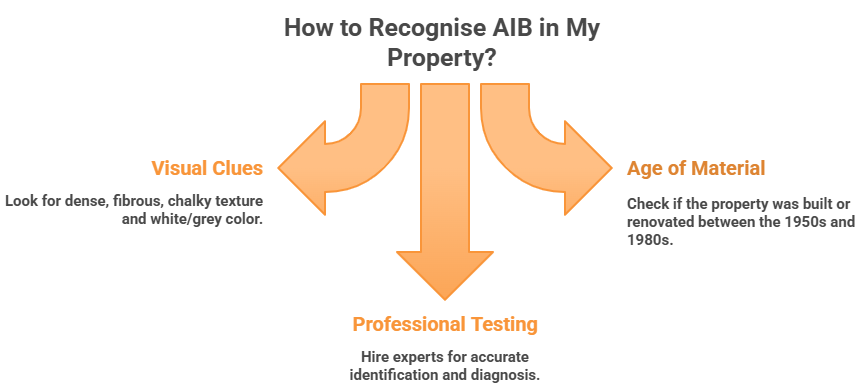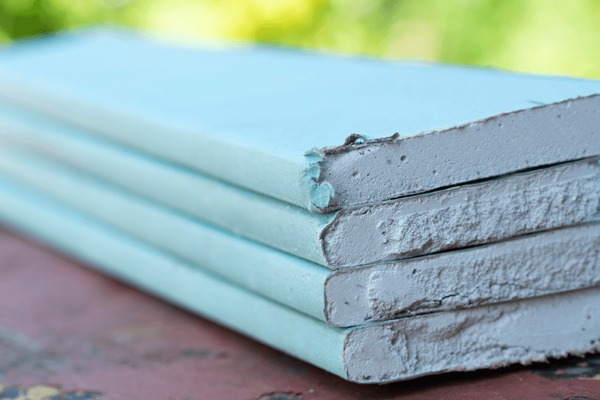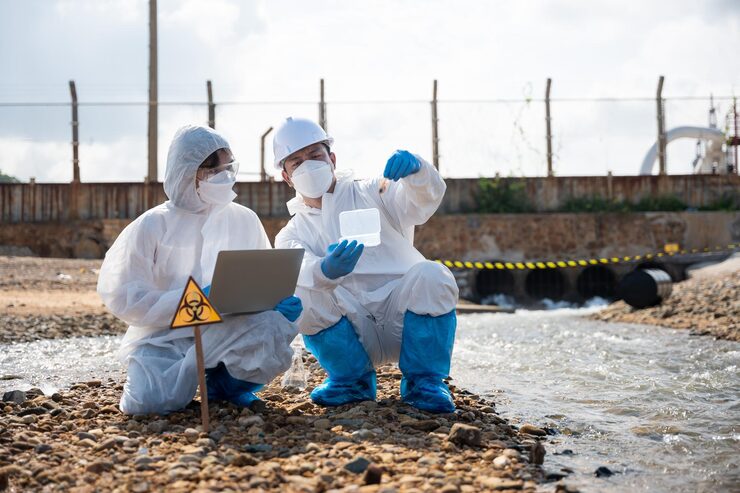AIBs have been used widely since World War 2. This means that it can be found in all types of properties, being used for its fire-retardant properties, as well as for dry-lining purposes. However, the material can also be extremely friable.
However, what exactly is an AIB? And what makes it riskier than cement? This is what this blog will look into.
What Is Asbestos Insulating Board (AIB)?
An Asbestos Insulating Board (AIB) is an asbestos-containing material that has been used in construction, especially for fire resistance and its insulating properties. It is usually composed of asbestos fibers blended with other materials that lead to additional durability.
It was most commonly observed in between the 1950s and the 1980s. On the other hand, in Australia, it was declared completely illegal in 2003, and in many buildings predating the 90s, it can still be found.
Also, in Australia, asbestos insulation boards were commonly used as asbestos cement sheeting for walls, roofs, ceilings, and in low-density insulation boards. It can also be commonly observed to be used for extra cladding, internal walls, ceiling linings, eaves, and so on.
How Is AIB Different From Asbestos Cement?
An asbestos insulating board is not the same thing as asbestos cement, even though the basic principle of both materials might seem to be extremely similar. So, how does AIB differ from asbestos cement? Let’s look into the primary aspects of distinction:
| Features | AIB | Asbestos Cement |
|---|---|---|
| Asbestos Content | Up to 85% asbestos | Only 10-15% is asbestos |
| Texture | Friable, soft, easily crumbled | Rigid, hard, more durable |
| Common Uses | Fireproofing, partitions, insulation | Roofing, cladding, water tanks |
| Risk of Fiber Release | High, especially if disturbed | Lower, fibers bound in a cement matrix |
| Friabilty | Highly friable | Friability is low |
Table 1: AIB vs. Asbestos Cement
Why Is AIB Riskier Than Asbestos Cement?
The main reason why AIB can be considered riskier than asbestos cement is that the former is a more friable material compared to the latter. And by friability, it is implied that asbestos insulating board is more easily disturbed.
And the easier it is to disturb the material, the amount of fiber released is higher, making the chance of asbestos contamination much more prominent.
Moreover, inhaling asbestos fibers also comes with several severe health risks. This is especially true due to the carcinogenic effect of asbestos fibers. And it can lead to major health risks, including mesothelioma, asbestosis, or even lung cancer.
Also, it should be maintained that a more delicate and experienced approach is needed when it comes to the disposal of asbestos-containing material, such as AIB. If removed in a DIY way by non-professionals, disturbance can be risked, leading to more asbestos containment in the air than necessary.
Recognising AIB in Your Property
So, how can you recognise AIB in your property? There are certain clues that you can pay attention to, and that will make it more or less feasible to recognise the presence of asbestos insulation board in your home.
The first one to keep track of is the visual clues. Here, a very obvious visual clue is the texture of AIB. It can usually be identified by a dense, compressed, fibrous, and chalky texture. And they are also usually white, grey, or off-white in appearance.
And another, more important clue here can be the age of the material. If the material was constructed in the 1950s-80s space, it is highly likely that asbestos has been used in the construction.
And if these clues are not sufficient, it can be recommended to get your property tested for asbestos by a professional or expert. It is, anyway, the ideal choice. As professionals have the expertise and the tools for the most accurate recognition and diagnosis.

Safe Handling and Professional Remediation
Now that you have detected the presence of asbestos in your property, what to do next? Do you want to work on removing the asbestos yourself? It is something you should not try to do, as it is dangerous, and also heavily restricted across all the states of Australia.
Essentially, you are legally allowed to remove less than 10 square meters of non-friable asbestos. This is because the government recognises improper rectification measures to be dangerous and capable of causing major health risks.
So, for safe handling, the asbestos correction should ideally be left to a professional. Most of these professional remediation services have the ideal tools for safeguarding from asbestos in the safest possible manner.
Moreover, their services are also licensed, come with recognised insurance, and are compliant with the national regulations of the country.
To better explain this, let’s look into the most suitable steps to take for AIB remediation.
AIB Risk Management-Dos and Don’ts
So, to explain what to do and not to do in AIB risk management, the following chart can be an effective tool to consider:
| Dos | Don’ts |
|---|---|
| Get a licensed asbestos assessment | Disturb or break AIB yourself |
| Use professional remediation teams | Attempt DIY removal |
| Follow all local safety regulations | Ignore warning signs |
| Inform contractors about asbestos | Delay addressing suspected AIB |
Table 2: AIB Risk Management – Do’s and Don’ts
Australian Regulations on AIB Remediation
So, now that we know that the Australian government strictly restricts DIY asbestos insulating board solutions, why not look into some of the regulatory policies present in the country?
Here’s a chart to depict the regulations:
| Regulation | Description | Application |
|---|---|---|
| Safe Work Australia Code of Practice | Procedures for asbestos correction | Nationwide |
| State-specific asbestos laws | Varies by state (NSW, VIC, QLD, etc.) | Local compliance needed |
| Asbestos Waste Disposal Guidelines | Proper disposal methods | Applies to all licensed removers |
| Licensing Requirements | Who can legally remove AIB | Licensed professionals only |
Table 3: Australian Regulations on AIB
And the primary reason that the government acknowledges professional asbestos remedy units is that they ensure compliance with all the aforementioned regulatory guidelines. Thus, they are more eligible for AIB remediation activities.
Summing Up
AIB is a serious risk because of its asbestos content, which is extremely carcinogenic in nature, leading to health risks. And since it contains 80-85% asbestos, it is a lot more challenging to manage compared to asbestos cement, which is up to 15%.
Thus, for remediation, contact a professional and ensure safe practices that also address the regulatory and compliance needs of the Australian government.
AIB in Your Home? Get it Checked Professionally!
Suspect Asbestos Insulating Board in your home or business? Don’t risk your health. Contact our licensed asbestos remediation experts today for safe inspection and remediation services across Australia. Do not wait. Book a consultation today!
Frequently Asked Questions
What Does Asbestos Insulation Board Look Like?
Depending on the type of AIB in your home, it can be of different colors. While grey or off-white is the usual color, it can be of a blue-grey or brown color as well. They can look like corrugated cement sheets, textured coatings, or fibrous insulation boards.
What is the Difference Between AIB and Insulation Cement?
They are usually visually different, while also differing in composition, friability, and density as well. AIB is also more prone to releasing asbestos fibers when disturbed compared to regular insulation cement.
What is Asbestos Insulation?
Asbestos insulation is essentially called that as it is a building material with insulation properties, and it contains asbestos. It is usually toxic and can lead to health issues such as lung cancer and mesothelioma.
Is an AIB Soft to the Touch?
Yes. An AIB is generally soft, porous, and less dense when compared to other asbestos materials, including asbestos cement.





